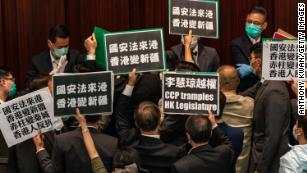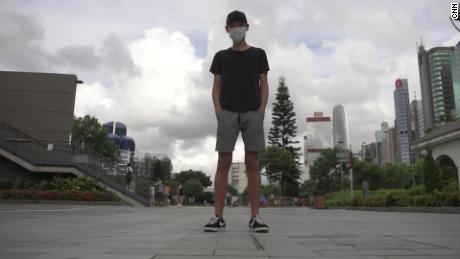COMPASSIONATE CAPITALISM
The price of taking a stance: How corporate sociopolitical activism impacts bottom line
As the political climate in the United States becomes increasingly charged, some businesses are looking to have their voices heard on controversial issues. The impact of corporate sociopolitical activism on a company's bottom line depends on how the activism aligns with the firm's stakeholders, according to new research published in the Journal of Marketing.
Study co-author Nooshin Warren, assistant professor of marketing in the University of Arizona Eller College of Management, says that over the last 10 years, purpose-driven corporate actions have evolved from companies contributing to widely supported causes, such as cancer research, to companies taking stances on more divisive issues, such as gun control and LGBTQ rights. The movement from philanthropic activities to sociopolitical activism has significant effects on firm value and stock market performance, which vary depending on how the activism aligns with the views of a firm's customers, employees and state regulators.
"In the past few years, we have reached the intersection of politics and doing societal good," Warren said. "Companies still have value systems and want to advance society, but the biggest difference in this case is that societal good is debatable, political and partisan."
The researchers examined a dataset of 293 instances of corporate activism between January 2011 and October 2016 by 149 firms throughout the United States. The hot-button sociopolitical issues were selected based on the Pew Research Center's 2014 Political Polarization in the American Public report and Political Polarization and Typology Survey. Some corporate activism examples included Amazon removing Confederate flag merchandise from its website, JCPenney featuring two lesbian moms in a Mother's Day advertisement and the Kroger grocery chain issuing a statement in support of its policy allowing customers to carry firearms in its stores.
Researchers surveyed 1,406 people and asked them to label each corporate activism event on a scale from "very liberal" to "very conservative." A second survey of 375 people helped researchers identify a given company's typical customers as having more liberal or conservative views. The team gauged the political leanings of company employees through political contribution data from the U.S. Federal Election Commission. The researchers then looked at the political composition of the legislature of the state where each firm is headquartered.
Put simply, Warren said, if a company's activism aligns with the values of its customers, employees and state regulators, the impact will be positive. If it misaligns, the impact will be negative.
"The strongest effects come from alignment with consumers' values, and consumers are obviously the most vital source of revenue for a firm," Warren said. "Punishment from a government can have a sudden and significant impact on a company as well. Employees, although very important, have less of an immediate impact."
The researchers measured changes in stock market value in the five-day window surrounding a corporate activism event. The team found if a company's action was misaligned with its key stakeholders, the company's stock market value decreased 2.45% compared to market expectations, as established by the Center for Research in Security Prices. If aligned with their stakeholders values, stock prices increased by .71%
The researchers further investigated the response of consumers to activism and found that as long as the activism is in line with consumers' political values, the company's quarterly and annual sales grow after the activism. When activism is highly deviated from customers and the government, sales growth suffers. This is especially true when activism highly deviates from all three key stakeholders, which resulted in a sales decline of 4%.
Warren says companies have important decisions to make concerning the current unrest over racial justice issues.
"I wish racial equality was not a polarizing issue, but given that it is, firms should carefully identify their consumers, employees and other stakeholders, and resonate with their values," Warren said. "But it is important to stay authentic, as society is watching carefully and will hold firms accountable for their actions as well as for their silence."
What Companies Should Know
If a company wants to engage in corporate activism and alleviate negative results, Warren said, it should consider five factors that the researchers showed can amplify the effects of alignment or misalignment.
The messenger. Warren says a statement means more to customers when it comes from a CEO rather than a public relations representative. She says that's especially true for "celebrity CEOs" like Facebook's Mark Zuckerberg or Amazon's Jeff Bezos.
Action vs. statement. Action provides more impact than statements, both positive and negative, Warren says. For example, she says Target providing transgender-inclusive bathrooms has a stronger impact than a company simply stating support for the LGBTQ community.
Number of firms. Warren says multiple companies taking a stance together can mitigate negative impact from misalignment with lawmakers, since regulators are much more likely to punish one firm than an entire industry.
Internal vs. external benefits. If a company's message or action is specifically for its own benefit or that of its employees, consumers may view that as less of a societal good, and more of a company simply thinking about its bottom line.
###
The research team also included Yashoda Bhagwat, assistant professor of marketing at Texas Christian University; Joshua Beck, assistant professor of marketing at the University of Oregon; and George Watson IV, assistant professor of marketing at Portland State University.









